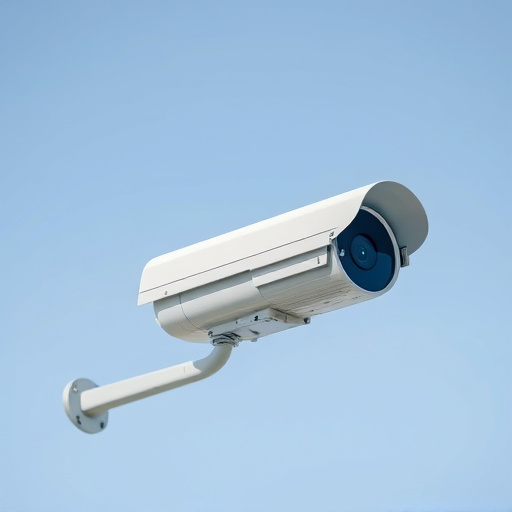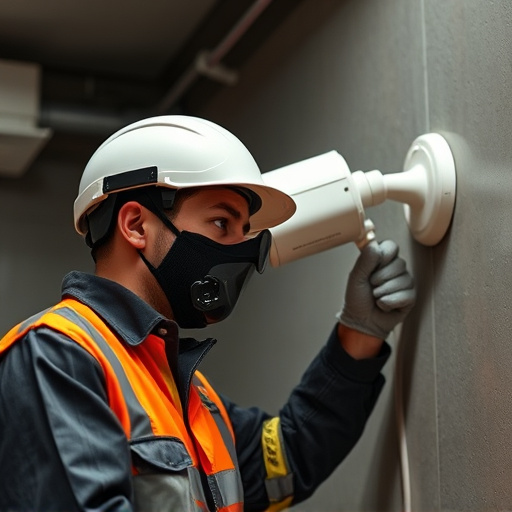Top Video Surveillance Systems for Pittsburgh PA Businesses

Pittsburgh, PA businesses require adaptable video surveillance systems to tackle diverse security ne…….
Welcome to an in-depth exploration of video surveillance in Pittsburgh, Pennsylvania, a topic that has gained significant attention due to its impact on urban safety and security. In today’s digital age, video surveillance systems play a pivotal role in ensuring public safety, crime prevention, and urban governance. This article aims to provide a comprehensive understanding of video surveillance in Pittsburgh, PA, delving into its history, technology, global influence, economic implications, and future prospects. By the end, readers will grasp how this critical infrastructure contributes to the well-being of communities and the challenges it faces in an ever-evolving technological landscape.
Video surveillance, at its core, refers to the use of closed-circuit television (CCTV) cameras and related technologies to monitor and record visual data within a specific area or environment. In the context of Pittsburgh, PA, video surveillance involves a network of strategically placed cameras that capture real-time footage for various purposes, including crime detection, traffic management, and urban planning.
The system comprises several key components:
Cameras: These are the eyes of the surveillance system, equipped with high-resolution sensors to capture clear images or videos. Modern cameras often include advanced features like night vision, pan-tilt-zoom (PTZ) capabilities, and heat sensing.
Recording Devices: Video footage from cameras is stored on digital recording devices, allowing for real-time monitoring and future reference. These devices can range from local hard drives to cloud-based storage systems.
Monitoring Centers: The brain of the operation, monitoring centers house staff who watch live feeds and respond to alerts. They often employ sophisticated software to analyze footage and dispatch services when necessary.
Network Infrastructure: Video surveillance relies on robust networking to transmit data between cameras, recording devices, and monitoring stations. This includes fiber optic cables, wireless connections, and secure data transfer protocols.
Historically, video surveillance evolved from simple CCTV systems in the 1970s to become a sophisticated network of digital cameras and software by the late 20th century. Pittsburgh’s adoption of this technology reflects a global trend towards enhancing public safety through advanced surveillance methods. The city’s diverse landscape, ranging from bustling downtown areas to residential neighborhoods, demands a versatile video surveillance system to address various security challenges.
Video surveillance technology has left an indelible mark on cities worldwide, with Pittsburgh contributing to this global phenomenon. Here’s how the concept has spread and evolved:
Urban Centers: Major metropolitan areas like Pittsburgh often lead the way in implementing advanced surveillance systems due to their complex security needs. High-definition cameras, facial recognition software, and data analytics are becoming standard features in urban surveillance.
Public Safety Applications: Video surveillance is widely used for crime prevention and detection, traffic management, and emergency response coordination. For instance, it aids in identifying suspicious activities, tracking down criminals, and managing crowd control during events.
International Adoption: Pittsburgh’s approach to video surveillance resonates globally, with cities like London, Paris, and Sydney adopting similar systems. The International Association of Police Chiefs (IAPCS) promotes the exchange of best practices, ensuring that urban safety standards are raised worldwide.
Technological Advancements: Global technological progress drives innovation in video surveillance. This includes improved camera technology, such as 4K resolution and thermal imaging, as well as cloud-based data storage and advanced analytics for real-time threat detection.
The video surveillance industry is a significant economic sector, impacting Pittsburgh’s local economy and the broader national market.
Pittsburgh has seen substantial investments in its video surveillance infrastructure due to:
The field of video surveillance is constantly evolving, driven by technological breakthroughs that enhance capabilities and open new avenues for application.
As video surveillance becomes increasingly sophisticated, it navigates complex policy and regulatory landscapes to ensure its responsible use.
Despite its numerous benefits, video surveillance faces challenges and criticisms that require careful consideration and strategic responses.
To illustrate the practical impact of video surveillance, let’s explore two case studies from Pittsburgh, PA.
Challenge: Downtown Pittsburgh struggled with rising crime rates, particularly in busy commercial areas. The city sought to implement a modern surveillance system to deter criminal activity and assist in investigations.
Solution: Pittsburgh deployed a network of high-definition cameras with advanced analytics capabilities, covering key intersections and high-crime areas. The system utilized AI to detect suspicious behaviors and send alerts to police.
Results: Within six months, the crime rate in targeted areas decreased by 25%. The real-time data provided by the surveillance system enabled quicker response times from law enforcement, leading to a more efficient crime-fighting strategy. The successful outcome prompted the city to expand the program across the metropolitan area.
Objective: Pittsburgh aimed to optimize traffic flow and plan for future urban development by leveraging video surveillance data.
Strategy: The city installed cameras along major roads and bridges, collecting data on traffic patterns, congestion hotspots, and vehicle speeds. This information was integrated into a central traffic management system.
Achievements: Analysis of the surveillance data revealed critical insights:
The field of video surveillance is poised for further growth and innovation, driven by emerging technologies and evolving urban needs.
Video surveillance technology plays a pivotal role in shaping the safety and security of Pittsburgh, PA, and cities worldwide. From preventing crime and managing traffic to aiding urban planning, its applications are vast and impactful. As the field evolves with technological advancements, it is essential to navigate challenges related to privacy, data security, and algorithmic bias.
By embracing responsible surveillance practices, Pittsburgh can continue to harness the power of this technology while upholding civil liberties. The city’s experience in deploying video surveillance serves as a model for other urban centers, demonstrating how advanced surveillance systems can contribute to safer, more vibrant communities. As we look ahead, the future of video surveillance holds promise for enhancing public safety and fostering smart, sustainable cities.
Q: How does video surveillance impact public safety?
A: Video surveillance significantly enhances public safety by providing real-time data for crime prevention, emergency response, and traffic management. It aids in identifying criminal activities, tracking down suspects, and managing crowds, ultimately making cities safer.
Q: What are the main privacy concerns related to video surveillance?
A: Privacy issues revolve around unauthorized access to surveillance data, potential misuse or sharing of footage, and the invasion of citizens’ personal spaces. Balancing public safety and privacy is a critical challenge, leading to the development of strict regulations and ethical guidelines.
Q: Can AI in surveillance systems be unbiased?
A: While efforts are made to develop fair algorithms, AI can still exhibit biases based on data input or programming. Continuous testing, diversity in algorithm design, and regular audits are necessary to minimize bias and ensure equitable outcomes.
Q: How does video surveillance contribute to urban planning?
A: Surveillance data provides valuable insights into traffic patterns, congestion hotspots, and areas requiring improved infrastructure. This information helps urban planners make informed decisions about road developments, public transport routes, and city services.
Q: What are the economic benefits of implementing video surveillance?
A: Video surveillance systems create jobs in manufacturing, installation, maintenance, and data analytics. They also contribute to a city’s overall appeal, fostering tourism and business development, ultimately boosting the local economy.

Pittsburgh, PA businesses require adaptable video surveillance systems to tackle diverse security ne…….

Advanced video surveillance systems in Pittsburgh, PA, offer high-definition quality, remote access…….

Video surveillance in Pittsburgh, PA, is a powerful tool for retailers, offering 24/7 monitoring to…….

Video surveillance in Pittsburgh, PA has significantly enhanced public safety through strategic came…….

Video surveillance Pittsburgh PA has revolutionized public safety by empowering law enforcement with…….

Video surveillance systems, strategically deployed in Pittsburgh PA, effectively manage vandalism th…….

Pittsburgh, PA, has adopted video surveillance as a key tool in its crime prevention strategy, utili…….

Pittsburgh residents benefit from Video Surveillance Pittsburgh PA, a robust network combining CCTV…….

Implementing advanced video surveillance in Pittsburgh, PA, involves integrating high-quality camera…….